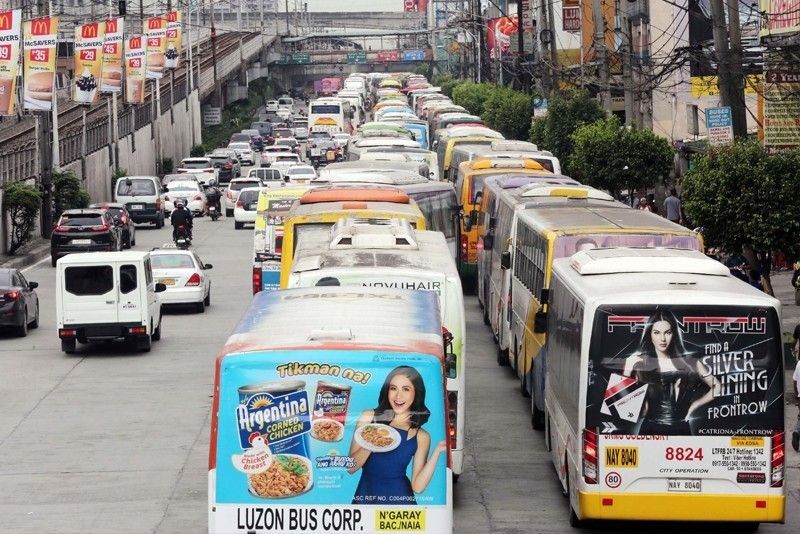Metro Manila worst to drive in, according to Waze ranking

MANILA, Philippines — Manila is the worst city in the world to drive in, according to a ranking by traffic navigation app Waze.
According to Waza data, it took 4.9 minutes to drive a full kilometer in Metro Manila in September 2019, marking a significant increase from April's recorded figure of 3.8 minutes.
The nation's capital is set to repeat as the worst in the world to drive in according to Waze’s 2019 ranking, country lead Sarah Rodriguez said in an interview with Bloomberg.
Waze's 2017 Driver Satisfaction Index, which surveyed data among its claimed 90 million active users, also labelled Metro Manila drivers as the most miserable in Asia in a list spanning 39 countries.
President Rodrigo Duterte in June promised to secure a five-minute travel time from Cubao to Makati for commuters and motorists. The two cities are about eight kilometers apart, or about a 40-minute drive, according to Waze.
66 minutes a day spent in traffic
However, a study by the Boston Consulting Group commissioned by Uber shows that Metro Manila motorists wait in traffic for an average of 66 minutes every day on top of 24 minutes spent looking for parking at their destinations. The study listed Manila as the third worst in Asia, just behind Bangkok and Jakarta.
Data from the MMDA revealed that in 2018, Epifanio delos Santos Avenue serviced 402,000 vehicles per day, far exceeding its supposed capacity of 288,000 daily.
The Department of Public Works and Highways has assured the public that infrastructure projects under the administration's Build, Build, Build program are underway to help decongest traffic in the metropolis.
According to the BCG study, Filipinos will spend a little over 16 days stuck in traffic in one year. Urban planner Felino "Jun" Palafox Jr furthered this number in an interview with ANC, saying that this stacks up to "at least nine to fifteen years taken from your life" given the full 40 years of one's economic life.
And according to Waze's Rodriguez, this is only going to get worse as the country inches closer towards Christmas season. “This is the time of the year when Filipinos travel the most and also spend the most time per drive,” she said.
Rodriguez noted that traffic congestion has begun to constantly build up throughout the day and then peak in the evening, according to recent Waze data.
“Two years ago, there were two spikes — morning rush hour and evening rush hour — then in-between there was a dip," she said.
"Now, it has changed. There’s no more midday dip."
20-percent increase in traffic after August
MMDA traffic head Edison Nebrija has warned the public that EDSA traffic increases by about 20 percent in the months after August. According to him, the usual figure is expected to balloon to 487,058 cars a day in the coming months, much higher than the recorded volume this time last year.
In an attempt to alleviate the coming holiday traffic, the MMDA has called for a ban on weekday sales from November 11 until January 8, 2020. Mall operators also agreed to open their establishments at 11 a.m. on weekdays.
The Metro Rail Transit Line 3 earlier announced that it would not be extending its operating hours during the Christmas season as it typically does to give way to its scheduled rail replacement. They promised better services for commuters once the repairs are finished.
The Light Rail Transit-1 line on the other hand said they would still hold longer hours. Meanwhile, three LRT-2 stations remain out of commission after a rectifier-transformer along the line caught fire in early October.
This comes in the midst of what transport and worker groups have called a mass transportation crisis.
- Latest
- Trending
































